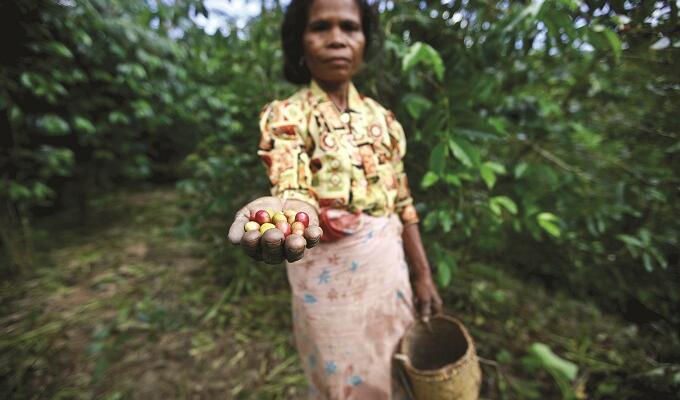

Fighting poverty through trade
Trade is crucial for development and growth. While we should not pretend it is a quick fix, the fight against poverty cannot be won without trade, increased production and job creation. This is why the Norwegian Government will make greater use of trade as a development-policy instrument to help integrate the poorest countries into the global economy.
History shows that obstructing foreign trade and investments rarely leads to sound and sustainable economic growth. On the other hand, countries setting out to join the World Trade Organization (WTO) seek to use trade to develop their economies. Making this kind of political choice entails both rights and obligations. At the WTO Ministerial Conference in December last year, Liberia and Afghanistan, two least developed countries (LDCs) troubled in different ways , were welcomed as members of the trade body. Welcome, too, was agreement on the so-called Nairobi Package, covering agriculture, cotton and preferential rules and treatment of LDCs.
In its role as a global champion of trade, the WTO continues to provide a bulwark against protectionism and offers a common framework for international trade. It provides a forum in which LDCs can work together to promote their interests as a group. From a development perspective, maintaining and strengthening the WTO should therefore be a primary trade policy goal.
OPENING MARKETSHowever, the export interests of developing countries have received too little attention in WTO negotiations. More focus is needed on the potential gains for developing countries from opening markets. Implementation of WTO commitments is also an important policy tool for reaping the benefits of international trade. An open, rules-based trading system is good for business, not only globally but also at the country level. Predictability and stability are essential in creating an enabling environment for fair competition and private-sector development, which in turn can help develop economies on a broad scale, including those of the poorest countries.
Developing countries make up a highly diverse group and their potential for benefiting from international trade varies greatly. So does the extent to which they can take on commitments. Special and differential treatment for developing countries should not just mean that they remain outside the multilateral trading framework. Rather, their specific needs should be identified with the aim of including them.
It is also important to provide assistance to developing countries in implementing agreements. Agreements should be better adapted to the specific situation in developing countries, as in the recently ratified WTO Trade Facilitation Agreement. This agreement broke new ground, in the sense that the requirement to implement the agreement is linked to the capacity of each country to do so. Assistance and support should be provided to help countries achieve that capacity.
South-South trade has increased immensely over the past 20 years, largely led by China and other emerging economies. However, the poorest countries need to be able to tap into the potential of South–South trade: for LDCs with limited resources, trading with neighbouring countries is often the first step towards participation in global trade.
MUTUAL BENEFITSStill, barriers to trade among developing countries can sometimes be greater than those between developing and developed countries. Overcoming them and strengthening trade and cooperation between neighbouring countries can lead to more diversified trading patterns. WTO rights and obligations may also provide mutual benefits in trade among neighbours, among LDCs and between LDCs and other developing countries.
While market access is important, it is not sufficient to improve the situation for the poorest countries. The LDC share of world trade is still far too low: it was only 1.23 % in 2013, according to WTO data. More effective development cooperation is therefore needed for such countries to increase their exports. The individual countries concerned and the international community share responsibility for overcoming the constraints. It is therefore a matter of concern that only three of the ten biggest recipients of Aid for Trade since 2006 are classified as LDCs (Aid for Trade at a Glance, OECD, 2015 ).
A larger share of Aid for Trade resources – and official development assistance in general – should therefore be allocated towards the poorest countries. At the same time, the poorest countries must demonstrate a genuine desire to facilitate private-sector development and trade.
Another key factor for economic growth and poverty reduction is gender equality. It is crucial to integrate the gender perspective in all policy for business development and trade. Too often, politicians overlook the contributions made by women and the particular challenges facing them. For developing countries to succeed in exploiting their full trade potential, women must be part of the process.
While it is clear that trade is an engine for economic growth, there is no direct link between trade and poverty reduction. Targeted efforts to promote business development and job creation, efficient taxation, healthcare and education for all are also vital for people to have a fair chance of working their way out of poverty. In fact, no one is ever ‘lifted’ out of poverty; it is always about hard work.



